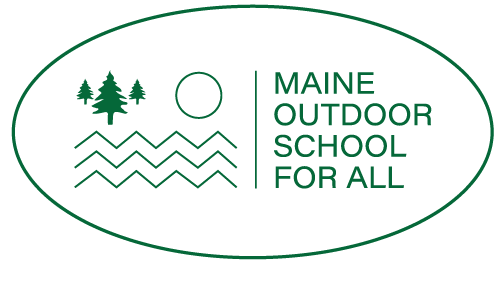Cows
We milk two Jersey cows – the oh-so-lovable Gertrude and Halo – by hand twice daily. These cows are bred annually for one winter and one summer calf, resulting in steady milk production as well as beef for the kitchen and Packout. Additionally, we buy in feeder calves from a local farm to increase beef production and better manage pasture.
Depending on the season, our herd ranges from four to seven cows at a time; beef cows go to slaughter in the fall as the grass growth slows down. It is a well-known fact around the barn that the liveliest and most important conversations happen from either side of the cow while milking. Milk is filtered on the farm and then pasteurized in the Wallace Center before being bottled for consumption in the dining hall.
Sheep
The farm keeps one ram and six breeding ewes, producing eight to 12 lambs for meat each spring. A semester alumni (known locally as the best sheep shearer in the state) shears our adult flock six weeks prior to the start of lambing season; their fiber is processed by a local spinnery into roving and yarn that become finished felted, woven, knitted, and crocheted masterpieces in the hands of semester students.
Lambing season – the month of March – is a time of high anticipation and joy in the barn. Semester students sign up in pairs to come to the barn at midnight and 3:00 am to check on pregnant mamas and newborns; the farmers sleep lightly with a walkie talkie at the bedside and wait for a call. The barn is at its most sacred in these middle of the night hours, but we all hope for the middle-of-the-day births, when the large bell rung centrally on campus indicates that everyone available should rush (quietly!) down to the barn to see a lamb being born. The sheep spend the pasture season (April through October) rotationally grazing with the cows until breeding and lamb slaughter in the fall.
Pigs
We purchase up to eight spring piglets from a local farm. These animals spend their early weeks on the farm in the manure shed attached to the barn and ultimately move out into a section of our woodlot until fall slaughter time.
The pigs are excellent foragers and huge fans of belly rubs. As with all of our meat animals, we tend holistically to their health, dignity, and quality of life. They provide us with a range of pork cuts and products, including fat that we render into lard for soap making.
Laying Hens
Around 100 layers – usually a mix of Rhode Island Reds and Barred Rocks – from two coops roam the farm all afternoon after a morning of egg laying in the coop.
Meat Birds
Each year we raise up to 300 broiler chickens and nine turkeys for meat. All meat birds rotationally graze in chicken tractors, moveable coops that allow them access to ground (and grass and grubs). We move the chicken tractors daily to maximize forage potential and to fertilize pasture with chicken manure.
Through the Farm Activity at summer camp, campers have full responsibility for feeding, watering, moving, and tending the chickens that will be served at their final Banquet dinner.
Bob the Horse
The charismatic megafauna of the Chewonki farm is Bob, our 1800-pound Suffolk Punch draft horse. Depending on the season, his work includes plowing and garden cultivation; hay cutting, tedding, and raking; winter logging and wood hauling; hayrides and deliveries with the dump cart; and a wide variety of other tasks.

Though we boast solar panels on the roof of the barn and a wind turbine next to our main gardens, Bob is by far the most fabulous renewable energy source at Chewonki. We are always looking for ways to expand our knowledge and to effectively and safely utilize draft horsepower, which so beautifully marries traditional practices with progressive land management.








